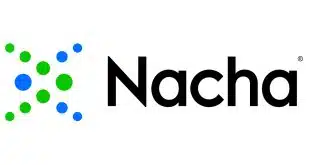In a further escalation of its war on costly bill-payment exceptions, automated clearing house governing body NACHA on Monday announced a new program that will convert erroneous electronic bill payments that otherwise would go through as paper checks into ACH transactions with a new field where the biller can enter corrected information for the originator.
NACHA already has three participants in the effort, dubbed the Bill Payment Exception (BPE) Mitigation Opt-in Program, and is seeking more among the ranks of billers, biller service providers, financial institutions, payment processors and others. The initial test companies are Capital One Financial Corp., a large credit card issuer; telephone company Verizon Communications Inc., and iPay Solutions, a bill-pay processor owned by Jack Henry & Associates Inc.
The effort is aimed at greatly reducing errors on bill payments originated on online-banking sites. Such errors, which often involve incorrect biller account numbers entered by the consumer, cost industry nearly $800 million a year to resolve. The incidence of such errors is increasing along with along electronic bill pay, but, ominously, the error rate also is rising, according to Robert Unger, senior director, e-billing and payments, at Herndon, Va.-based NACHA.
Some 0.51% of ACH bill-payments coming through third parties such as bank Web sites produced exceptions, according to data NACHA released in 2012, but Unger says the true rate likely is much higher. One sign: nearly 8% of bill payments sent to lockboxes generate exceptions, and many of those are the result of what originally were ACH bill payments converted into paper checks when the error was detected.
In a successful bill payment on a bank Web site, the consumer’s bank as payment originator uses biller databases to verify a bill’s account number. Such screens typically use so-called “account masks” to confirm the account number provided by the consumer conforms with the biller’s internal logic for generating account numbers. If the bank’s screen passes muster with the biller’s actual editing process, the transaction goes through and an electronic payment is sent to the biller.
If the customer information fails the edit, the biller is likely to receive a paper check from the bank under a process known as “drop to check.” Consumers often enter account numbers incorrectly, common reasons being typing errors or failure to note a new account number. For example, if a telephone customer adds a new service, the account number could change, says Unger. And some people paying credit card bills think the numbers on paper bills that feature 12 asterisks and four digits are real account numbers and enter those. “The billers have different kinds of practices that mess people up,” he says.
Under the new BPE process, a suspect account number that would otherwise cause the payment to drop to check would go through electronically as an ACH credit transaction known as customer-initiated entry, or CIE. The transaction would include an 80-character addenda field for the bank to transmit information about the payer, such as address or “anything the originator can provide to the biller to help the biller research the problem,” says Unger.
After the biller posts the payment, the biller would return corrected customer information to the originator via a so-called NOC/CO9 (notice of change) transaction. That process is intended to prevent re-entry of the same incorrect information in future transactions from the same consumer.
NACHA hopes a good number of companies participate in the error-reduction initiative, which is just the latest such opt-in program the organization has launched. “We promote the opt-in program as a way for people to innovate,” says Unger. He adds that bill-pay test has three likely outcomes: continuation as a voluntary initiative, discontinuance if the trial fails, or conversion into a mandatory program, which would require a rules change. “Once we have a good mass up and running [in the test] we would probably run it for a year, year and a half to get some good metrics,” says Unger.
Speaking Monday during a panel session moderated by Unger at the NACHA Payments 2014 conference in Orlando, Fla., Steve Hooper, senior vice president of payment strategy at iPay, said 20% of his company’s payments to billers go out as checks. Processing the NOCs will require back-office changes, he said, but he expects the BPE program’s returns will more than offset the costs. “A little bit of pain is definitely going to be worth it in the long run,” Hooper said.
In another bill-pay error-reduction effort, NACHA will have a conference session Tuesday to help drum up interest in its program to develop an open standard for using QR codes on bills that would remove from the consumer nearly all data-entry tasks. Consumers would scan the codes with a smart-phone app for upload and payment via mobile-banking programs.
NACHA has a number of banks and billers interested in the QR codes, but it needs to match them up for trials. “We’re looking to do a full-scale assault on exceptions,” says Unger.
n




